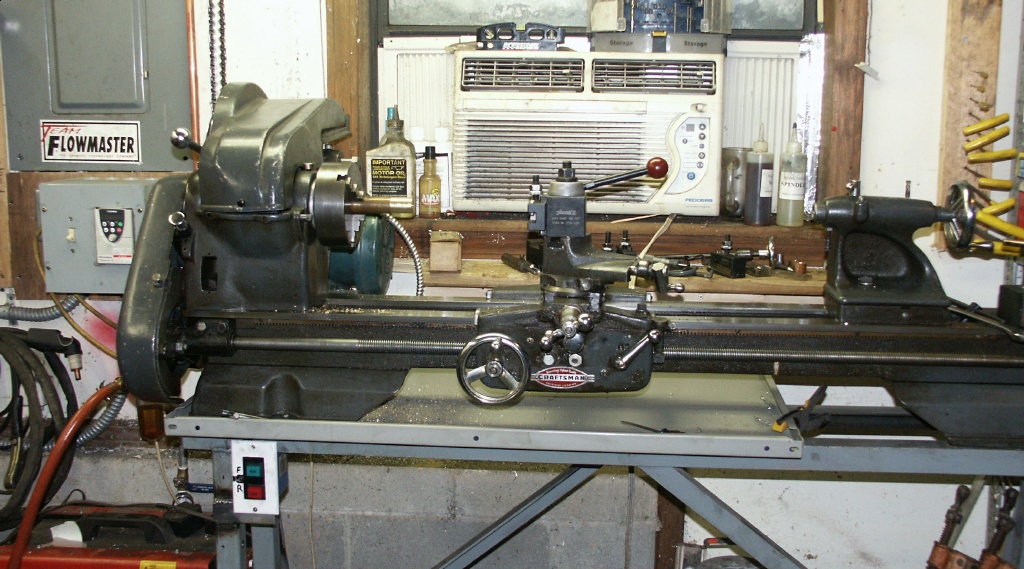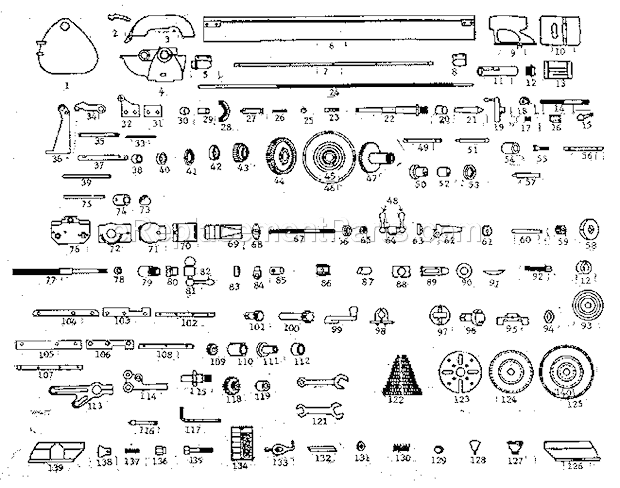

The mix used to produce ZAMAK has always varied to suit a particular application - for example ZAMAK 5 consists of 4% Aluminium, 1% Copper, 0.05% Magnesium with the rest Zinc - and it is known that Atlas choose to use one of the more durable varieties - even though, due to the higher casting temperatures needed, die life was shortened and costs increased. However, one very important advantage of ZAMAK was a surface finish so smooth that the need for machining was often eliminated, leading to a substantial saving in both production time and cost. The use of ZAMAK would have required a number of expensive dies - and Atlas must have reckoned on selling substantial numbers of machines to recoup their investment. It was developed by the New Jersey Zinc Company ( based near the Franklin and Sterling Hill mines of northern New Jersey where the zinc ore was extracted) and employed from the very beginning of Atlas lathe production in 1932.

ZAMAK (a registered trade mark) is an alloy of Z inc, A luminum, MA gnesium, and K upfer (kupfer is German for copper) pressure injected into hardened-steel dies. Two of the three copies made in England under the "Sphere" and "Halifax" labels went further and had several parts including the headstock 4-step pulley, changewheel guards and shell of the bed-mounted reversing gearbox made from an early form of a black, engineering-grade plastic. In the USA no such version was offered, though it was possible to fit the ordinary machine with a conversion kit - a bed-mounted 6-station capstan unit and a cut-ff (forming) slide.Įven in pre-WW2 years Atlas had made novel and economical use of new materials and all models had their changewheels, most other gears, handwheels, pulleys, clasp nuts and other small items made from "ZAMAK". Also produced, though in the UK only during and just after WW2, was a capstan version (screw-machine) a lathe dedicated to production work. If you don't recognise your particular Atlas model, explore all the hyper-links above for, besides different sizes of lathe, the company also produced a range of " Utility" and what were called " Unit Plan" models - some without screwcutting and with unguarded belt drives - that can be difficult to categorise. Although Atlas lathes were subjected to continuous detailed improvements, the general appearance of the 10-inch remained substantially unchanged from 1936 until 1957 - and the 6-inch lathe from 1937 until the early 1980s. As the final 12-inch lathe was assembled on the 6th of March, 1981, that gives a production run for the type as a whole, including the first 9-inch models, of almost 50 years. Even so, the very early 9-inch and the later more thoroughly developed 12-inch metal-turning are also not uncommon. Also relatively common is the Atlas wood lathe, this being made in several versions, some of which are shown here.

Because they sold in such huge numbers, the most frequently encountered models today are the "10F", a power-cross feed version of the "10-D", and the useful little backgeared and screwcutting 6-inch (3-inch centre height). Screwcutting Gearbox and Pick-O-Matic threading systemĪtlas Shaper Atlas Milling Machine Atlas Drill PressesĬraftsman-badged versions of Atlas machine toolsīuilt in 6, 9, 10 and 12-inch versions, Atlas lathes were made by the Atlas Press Company, an organisation based originally in Kalamazoo, Michigan, USA. Catalog extra hereĪcorn, Halifax & Sphere - copies from the UKĪtlas 9-inch and 10-inch Accessories with Catalog Pages & British-market Versions: Sphere, Halifax and AcorntoolsĪ complete data pack is available for the Atlas 10-inch & other LathesĪtlas 10-inch lathe - details below.
#6 ATLAS LATHE PARTS MANUALS#
Machine Tool Manuals Catalogues Belts Books Accessories
#6 ATLAS LATHE PARTS ARCHIVE#


 0 kommentar(er)
0 kommentar(er)
